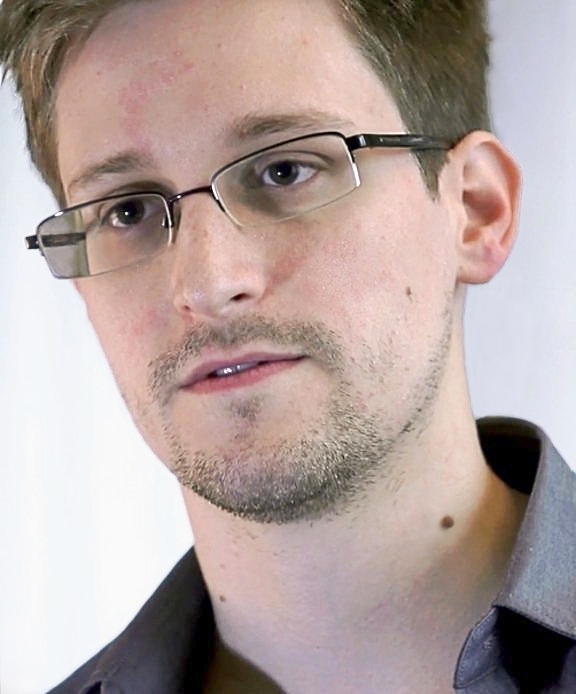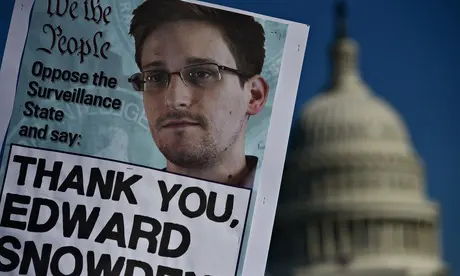Edward Snowden – NSA whistleblower
Edward Joseph Snowden (21 June 1983) is an American computer professional and activist who worked for the Central Intelligence Agency (CIA) and later for the National Security Agency (NSA) as a contractor. In June 2013, he released thousands of classified NSA documents to journalists Glenn Greenwald, Laura Poitras and Ewen MacAskill, which has become known as the Snowden revelations. Snowden is currently living in Russia where he has been granted a temporary asylum.
Snowden started working for the CIA in 2006 after attending a job fair. He was then assigned to the Global Communications Division at CIA headquarters in Langley (Virginia, US). He was later sent to the CIA‘s secret training school for technology specialists where he spend 6 months training and studying. In March 2007, the CIA stationed him in Geneva under official cover of diplomacy and a fake identity, where he worked as the top technical and cybersecurity expert.
In 2009, after resigning from the CIA, Snowden started working as a contractor for computer giant Dell, who assigned him to an NSA facility at Yokota Air Base near Tokyo (Japan). In 2011 he returned to the US where he worked on Dell’s CIA account. In March 2012, Dell reassigned Snowden to Hawaii as lead technologist for the NSA‘s information-sharing office. On 15 March 2013 he quit his job at Dell and started working as a contractor for Booz Allen Hamilton, after turning down a job offer at NSA‘s elite hacker team known as Tailored Access Operations.
![Photograph copyright Laura Poitras, Praxis Films. Obtained via Wikipedia [1].](https://www.cryptomuseum.com/people/snowden/img/snowden_small.jpg)
Edward Joseph Snowden (21 June 1983) is an American computer professional and activist who worked for the Central Intelligence Agency (CIA) and later for the National Security Agency (NSA) as a contractor. In June 2013, he released thousands of classified NSA documents to journalists Glenn Greenwald, Laura Poitras and Ewen MacAskill, which has become known as the Snowden revelations. Snowden is currently living in Russia where he has been granted a temporary asylum.
Edward Snowden
![]() Snowden started working for the CIA in 2006 after attending a job fair. He was then assigned to the Global Communications Division at CIA headquarters in Langley (Virginia, US). He was later sent to the CIA‘s secret training school for technology specialists where he spend 6 months training and studying. In March 2007, the CIA stationed him in Geneva under official cover of diplomacy and a fake identity, where he worked as the top technical and cybersecurity expert.
Snowden started working for the CIA in 2006 after attending a job fair. He was then assigned to the Global Communications Division at CIA headquarters in Langley (Virginia, US). He was later sent to the CIA‘s secret training school for technology specialists where he spend 6 months training and studying. In March 2007, the CIA stationed him in Geneva under official cover of diplomacy and a fake identity, where he worked as the top technical and cybersecurity expert.
In 2009, after resigning from the CIA, Snowden started working as a contractor for computer giant Dell, who assigned him to an NSA facility at Yokota Air Base near Tokyo (Japan). In 2011 he returned to the US where he worked on Dell’s CIA account. In March 2012, Dell reassigned Snowden to Hawaii as lead technologist for the NSA‘s information-sharing office. On 15 March 2013 he quit his job at Dell and started working as a contractor for Booz Allen Hamilton, after turning down a job offer at NSA‘s elite hacker team known as Tailored Access Operations.
On 20 May 2013, after working for Booz Allen Hamilton for less than three months, Snowden flew to Hong Kong after leaving his job at the NSA facility in Hawaii. There he revealed the classified NSA documents that he had been collecting during the past year to journalists Glenn Greenwald, Laura Poitras and Ewen MacAskill, giving them an insight into the NSA‘s many unwarranted mass-surveillance and data-collecting programs that, according to Snowden, were unconstitutional.Stories based on the Snowden revelations have since appeared in The Washington Post, The Guardian, Der Spiegel, The New York Times and others. Although many of the disclosures in the international press are based on the information revealed by Snowden, some of them have been falsely attributed to him, indicating that there are other sources of information leaks as well.On 23 June 2013, Snowden left Hong Kong and flew to Moscow with the intent to travel on to a South American country. However, as his passport had meanwhile been revoked by the US, he got stuck in Russia where he eventually obtained temporary asylum for one year. This was later extended by another three years. He is currently living at an undisclosed address in Russia.
Edward Snowden is regarded by some as a dissident, a patriot, a whistleblower and even a hero, but is called a traitor and a spy by others. In any case, his remarkable disclosures have fueled the worldwide debate about mass-surveillance, privacy, information security and (inter)national interests. The information provided here is largely based on the Wikipedia page about Edward Snowden and credits are due to the many contributors listed at the bottom of that page [1].
On 2 September 2020, a US federal court ruled that the NSA‘s mass surveillance program was illegal and possibly unconstitutional. During his tenure, US President Donald Trump hinted on several occasions that he might be willing to pardon Snowden, but so far no action was taken.
Films
- Verax (2013)
Short 5-minute low-budget film made by a local production team in Hong Kong, depicting Snowden hiding in the Mira Hotel while being unsuccessfully tracked by the CIA and China’s Ministry of State Security. Uploaded to YouTube on 25 June 2013. - Classified: The Edward Snowden Story (2014)
Feature-length crowdfunded film, directed by Jason Bourque, available as a free download. Released 19 September 2014. - Citizenfour (2014)
Two-hour film, tracing Snowden’s time in Hong Kong and Moscow, edited by Laura Poitras. Edited in Germany as Poitras was afraid that here material would be seized in the US. Won the 2015 Academy Award for Best Documentary Feature. Released 10 October 2014. - Killswitch (2014)
Film about big businesses trying to control the internet, the government trying to regulate it and hacktivists trying to free up information, featuring Edward Snowden, Aaron Schwarz, Lawrence Lessig and Tim Wu. World premiere at the Woodstock Film Festival. Released October 2014. - Snowden’s Great Escape (2015)
Second Edward Snowden documentary by Realscreen magazine, in coproduction with the German NDR and the Danish DR TV. Includes new interviews with Snowden, recorded in Moscow. Released on 12 January 2015. - Snowden (16 September 2016)
In 2014 The Guardian reported that American director Oliver Stone has bought the rights to Time of the Octopus, a novel based on Snowden’s life written by his Russian lawyer, Anatoly Kucherena. Stone will be using the book along with Luke Harding’s The Snowden Files for the screenplay of a forthcoming feature-length movie titled Snowden, which was largely shot in Germany in 2015. Release date: 16 September 2016.
Dutch premiere: Thursday 10 November 2016.
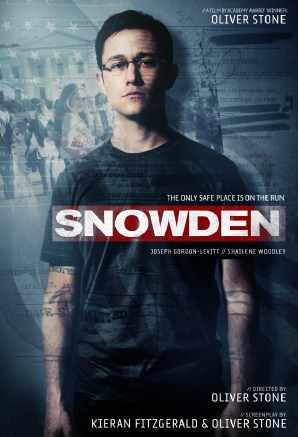 Snowden – A movie by Oliver Stone
Snowden – A movie by Oliver Stone
American film director Oliver Stone has made a feature film about Edward Snowden, based on the books Time of the Octopus, written by Snowden’s Russian lawyer Anatoly Kucherena, and The Snowden Files by Luke Harding. The movie shows how Snowden was first trained by the CIA and then worked for the NSA, where he began to question the legality of the NSA‘s mass surveillance program and the unwarranted tapping and recording of everybodies personal communications.
It gives us a revealing insight about what the NSA‘s surveillance program is really capable of, but leaves it to the viewer to decide whether Snowden should be called a hero or a traitor.
Making and financing the movie in the US appeared to be very difficult, if not impossible, so Stone diverted to Munich (Germany) where much of the movie was shot. The screenplay is by Oliver Stone and Kieran Fitzgerald, and Joseph Gordon-Levitt plays Edward Snowden.
Crypto Museum was asked to supply cryptographic and espionage equipment for the movie. Together with one other museum and a private collector, we brought together well over 100 objects that are visible in several scenes.
Most of the objects were used to recreate the internal cipher museum at the Hill, the CIA‘s training center in Virginia (US), but you may also spot the STE crypto phones in the CIA office in Geneva. In March 2015, Crypto Museum’s Marc Simons and Paul Reuvers travelled to Munich to assist in the shooting of these scenes. Although photographing was not allowed on the film set, most of the actors took the opportunity to make a ‘selfie’ with the famous Enigma machine…
During the several weeks of shooting in Munich, the more than 60 objects from our collection were treated extremely well by the production team. All personnel was informed that the staged museum contained ‘real museum pieces’, which had to be treated as such. After several months, the high-value pieces were returned to us without a single scratch. But not without an incident: when the production company’s courrier returned the items, his unmarked van was pulled over at the German motorway twice. On both occasions the police searched the vehicle and summoned the driver to open the boxes, which he refused. Coincidence or intimidation? You decide. source
How Glenn Greenwald helped whistleblower Edward Snowden reveal NSA secrets
BY Philip Dorling

Classified US National Security Agency maps leaked by Mr Snowden and published by US journalist Glenn Greenwald in the Brazilian O Globo newspaper reveal the locations of dozens of US and allied signals intelligence collection sites that contribute to interception of telecommunications and internet traffic worldwide.
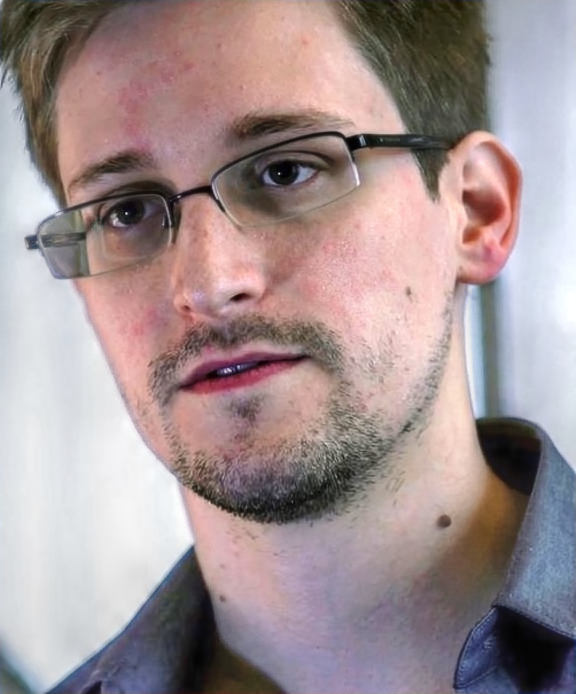 The US Australian Joint Defence Facility at Pine Gap near Alice Springs and three Australian Signals Directorate facilities: the Shoal Bay Receiving Station near Darwin, the Australian Defence Satellite Communications Facility at Geraldton and the naval communications station HMAS Harman outside Canberra are among contributors to the NSA’s collection program codenamed X-Keyscore.
The US Australian Joint Defence Facility at Pine Gap near Alice Springs and three Australian Signals Directorate facilities: the Shoal Bay Receiving Station near Darwin, the Australian Defence Satellite Communications Facility at Geraldton and the naval communications station HMAS Harman outside Canberra are among contributors to the NSA’s collection program codenamed X-Keyscore.Stranded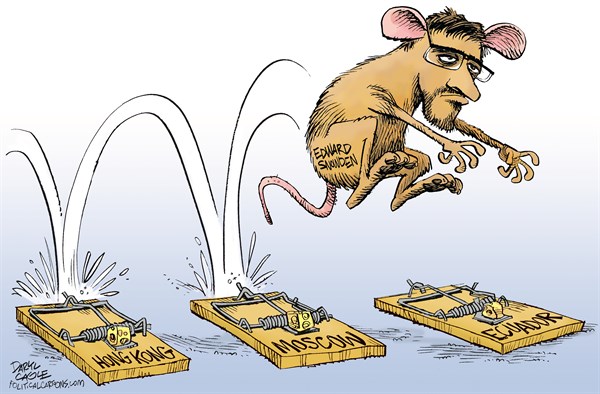
- NSA-backdoored equipment info found OFF this website
- U.S. Government Catalogue of Cellphone Surveillance Devices
- Backdoors on Wikipedia
- National Security Agency
- Central Intelligence Agency
- NSA EXTRACTED INFO
- CRYPTO MUSEUM
- Edward Snowden
- Stingray
- Pegasus Spyware
- X-Keyscore

